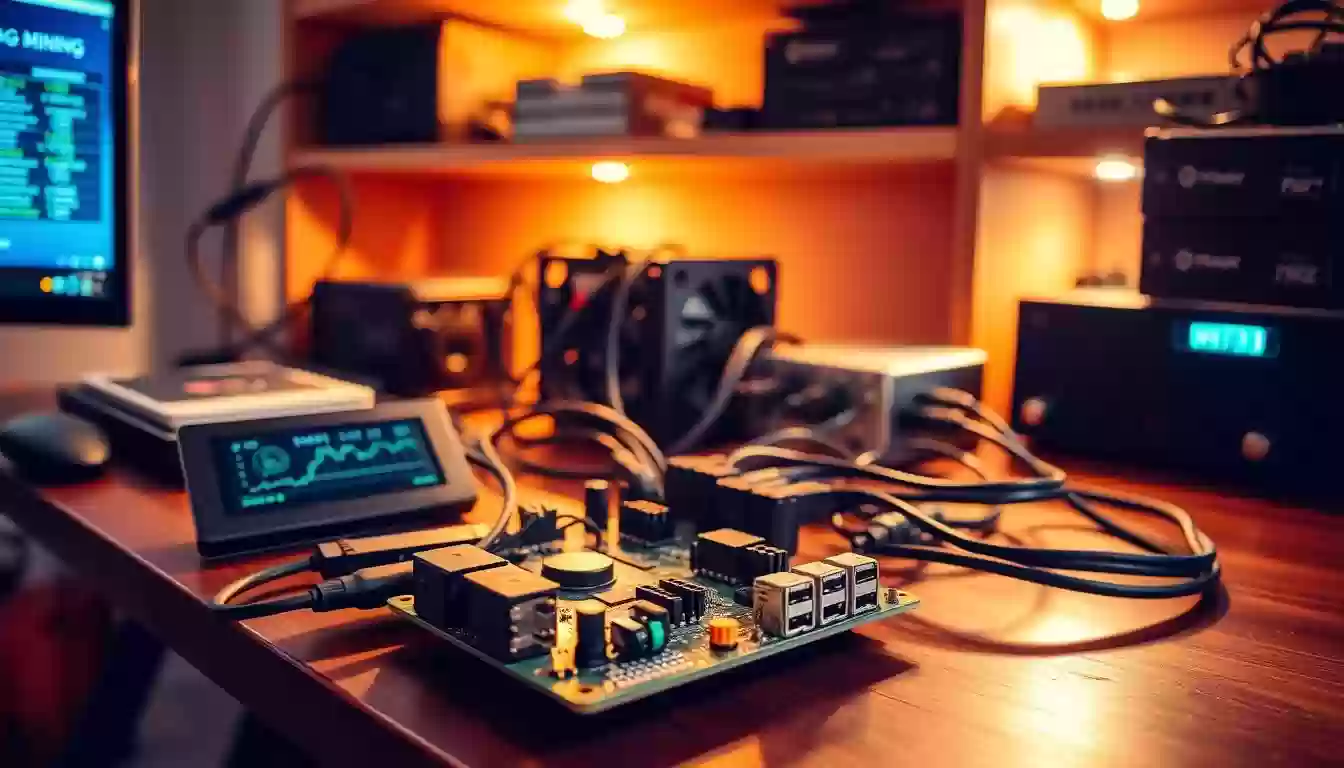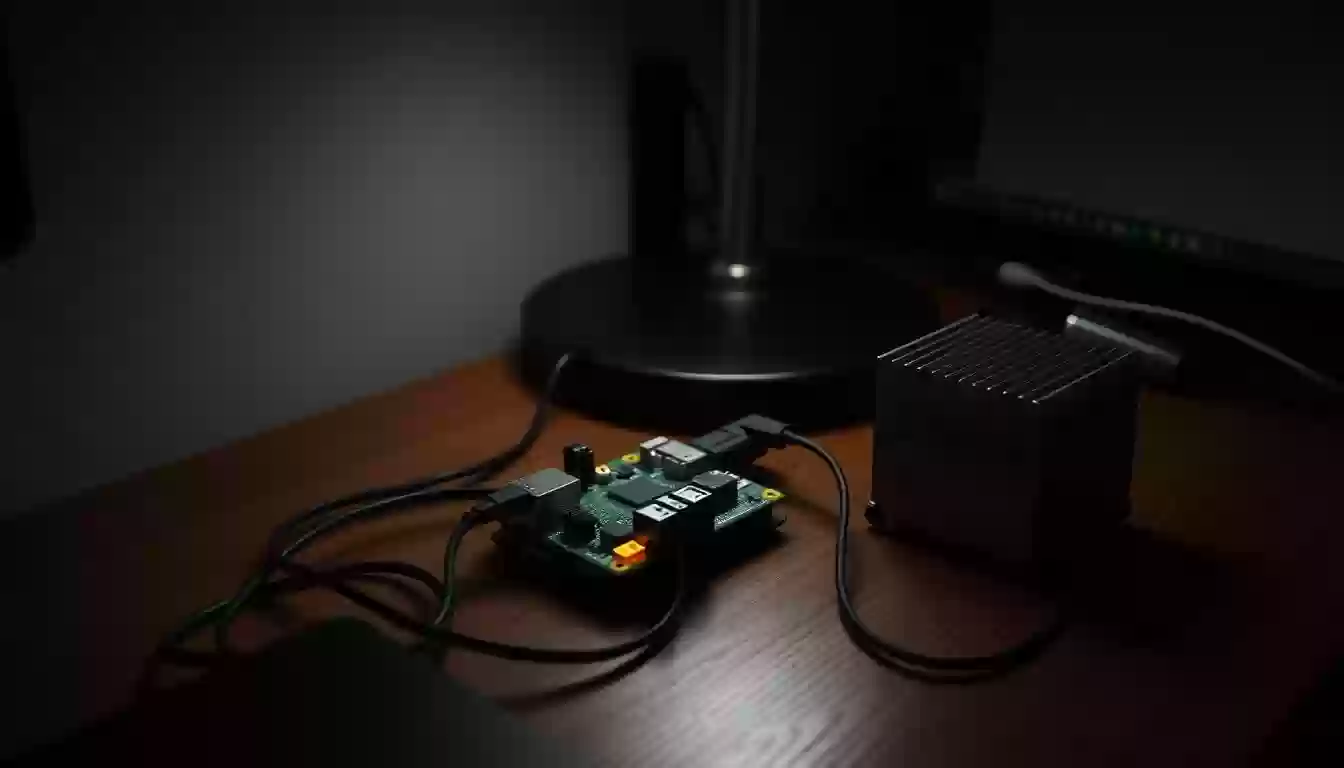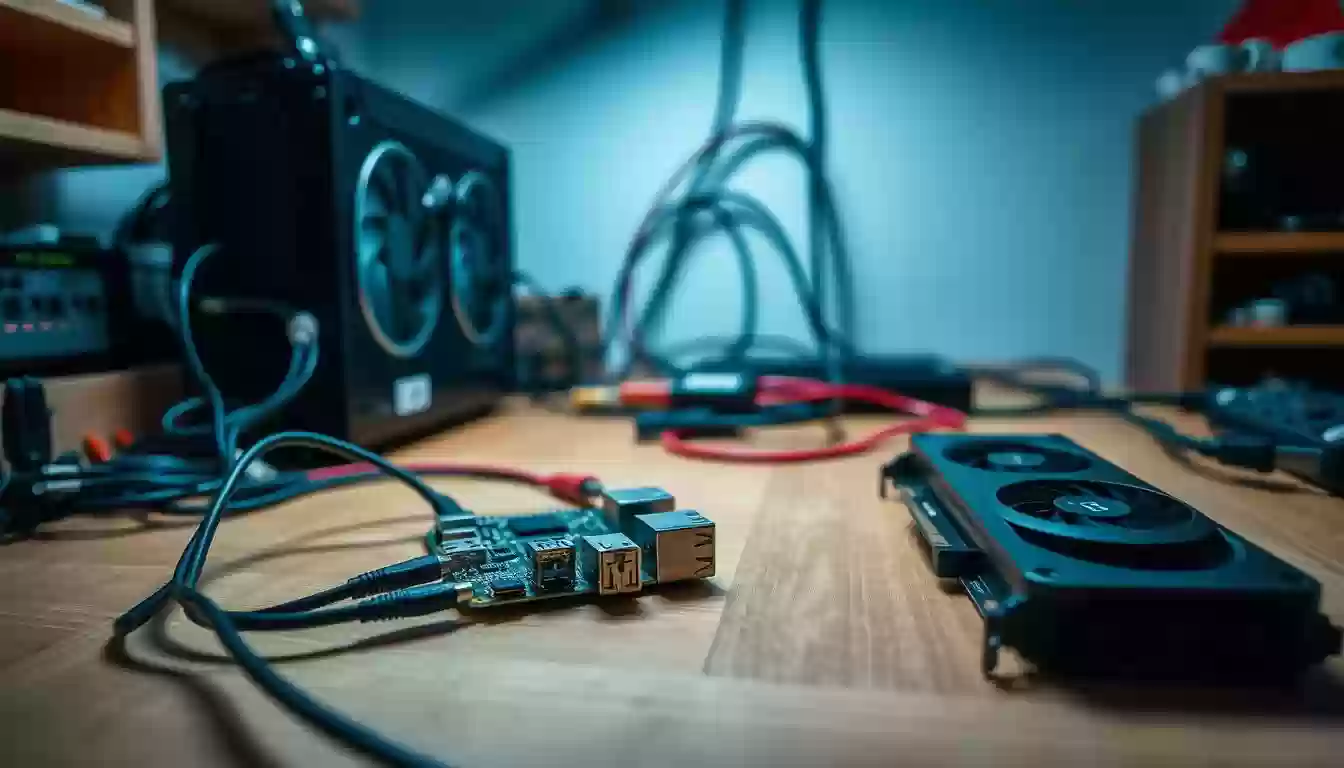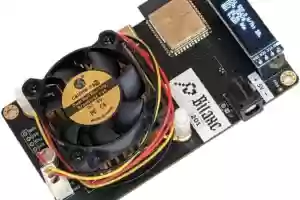Bitcoin Solo Mining on Raspberry Pi: Is It Worth It?
 25 Feb 25
25 Feb 25
Many people are looking into new ways to mine Bitcoin, like solo mining. They wonder if mining Bitcoin alone is a good idea. We'll look into solo mining and its benefits, like using a Raspberry Pi to mine Bitcoin.
Companies like Solo Satoshi are helping people mine Bitcoin on their own. But is setting up solo mining worth it? We'll see if solo mining with a Raspberry Pi is possible and if it's a good investment.
Understanding solo mining is key in the Bitcoin mining world. We'll compare solo mining to mining in a pool. This will help us decide if solo mining is a good choice for those who want to mine Bitcoin alone. Next, we'll show you how to start a solo mining operation with a Raspberry Pi, including what hardware and software you need.
Understanding Bitcoin and Mining Basics
Bitcoin is a digital currency that uses cryptography for secure transactions. It's important to know how it works and the role of mining. Mining verifies transactions and adds them to the blockchain, a public ledger of all Bitcoin transactions.
When looking at solo mining tutorial options, it's key to know the solo mining and pool mining differences. Setting up solo mining for Bitcoin is complex and needs a lot of computational power. Pool mining, on the other hand, combines resources to solve mathematical equations, increasing the chances of mining Bitcoin. The choice between solo mining vs mining pool depends on control and profit, with solo mining giving full control but possibly lower rewards.
Exploring Bitcoin mining, it's vital to weigh its benefits and drawbacks. Knowing the basics of Bitcoin and mining helps individuals make smart choices about their mining setup and strategy.
https://www.youtube.com/watch?v=rYAFyFsN5UE
What is a Solo Mining Setup?
A solo mining setup lets people mine Bitcoin on their own, without joining mining pools. It needs a powerful computer, Bitcoin solo mining software, and a stable internet connection. Experts say it's great for mining Bitcoin and other cryptocurrencies, giving more control and security.
For solo mining, the right tools and software are key. A solo Bitcoin mining guide helps set up the mining gear and software. But, solo mining costs more energy and makes less money than mining pools.
One good thing about solo mining is the chance to get full block rewards, which can be big. In 2025, the reward is 3.125 BTC. But, finding a block is rare, so miners need to think carefully before starting.

In summary, setting up solo mining needs careful thought about hardware, software, and the pros and cons. Knowing these helps people decide if solo mining is right for them and can lead to good rewards.
Why Use a Raspberry Pi for Mining?
The Raspberry Pi is a top pick for solo mining setup because it's cheap and uses little energy. It costs about $35, which is much less than ASIC miners. Plus, it only needs 5-10 watts of power, making it a budget-friendly choice for Bitcoin mining without pool.
For those wondering how to mine Bitcoin alone, the Raspberry Pi is a good option. It may not have the same power as ASIC miners, but it works for mining other cryptocurrencies too. Setting it up is easy, which is great for beginners in cryptocurrency mining.
https://www.youtube.com/watch?v=_M13MQQ5GPE
In summary, the Raspberry Pi is a great choice for those starting out in solo mining setup or wanting to learn about Bitcoin mining without pool. As the world of cryptocurrency grows, the Raspberry Pi will likely stay a favorite for how to mine Bitcoin alone and other digital currencies.
Setting Up Your Raspberry Pi for Bitcoin Mining
To start solo mining for Bitcoin, you need to set up your Raspberry Pi. This involves choosing the right model, installing software, and configuring it. Experts say setting up a Raspberry Pi for solo mining is fun and rewarding. It's important to consider the pros and cons of solo mining versus mining pools.
Choosing the right Raspberry Pi model is the first step in a solo mining tutorial. With many models available, each with different specs, picking the right one is key. After selecting your Raspberry Pi, you can install software like CGMiner. CGMiner is known for being easy to use.
When setting up solo mining for Bitcoin, proper setup and optimization are critical. This means configuring your Raspberry Pi and mining software. It also involves making sure your device runs efficiently. By following a guide and using the right tools, you can set up your Raspberry Pi for solo mining and start mining Bitcoin.

Assessing Mining Hardware Options
There are many mining hardware choices, like ASIC miners and Raspberry Pi devices. The right pick depends on your budget, energy use, and how well it performs. For example, ASIC miners are top-notch for Bitcoin mining but cost more than Raspberry Pi devices.
A solo Bitcoin mining guide can shed light on the pros and cons of each option. Solo mining might pay more because you don't share fees with pools. Yet, it needs a lot of computing power, which can be tough for some.

The benefits of solo mining Bitcoin include the chance for bigger payouts. Plus, you get to control your mining setup fully, which some find very appealing. But, solo mining is harder and needs a lot of tech know-how. The right Bitcoin solo mining software can help you do better and succeed more.
Mining Software for Solo Mining
Choosing the right mining software is key for solo mining setup. Options like CGMiner and EasyMiner are available. Experts say the right software depends on your mining hardware and how much you want to customize.
For Bitcoin mining without pool, pick software that works solo and fits your hardware.
To mine Bitcoin alone, you need software that can handle solo mining's complex tasks. Here are some top choices:
| Software | Features | Compatibility |
|---|---|---|
| CGMiner | Supports solo mining, customizable | Windows, macOS, Linux |
| EasyMiner | User-friendly interface, supports solo mining | Windows, macOS |
Look at ease of use, customization, and hardware compatibility when picking software. The right choice can boost your solo mining setup and help you mine Bitcoin alone successfully.

Calculating Your Earnings
When you start mining Bitcoin solo, knowing what affects your profits is key. The reward for finding a block is 3.125 BTC. The mining difficulty changes every two weeks to keep blocks coming at a steady rate. To figure out your earnings, you must consider the cost of your mining gear, energy, and the Bitcoin price.
A solo mining tutorial can help a lot. But it's also important to grasp how mining difficulty impacts your solo mining earnings. The difficulty is about 63.4 trillion, and the network's hash rate is roughly 375.3791 EH/s. To have a fair shot at mining one Bitcoin block a month solo, you'd need around 166,500 TH/s of hash power.
Compared to solo mining vs mining pool, mining pools offer steadier income. But solo mining can be more rewarding if you have a lot of hash power. Here's a table that outlines the main factors that influence Bitcoin mining profits:
| Factor | Description |
|---|---|
| Mining Difficulty | Adjusts every 2 weeks to maintain consistent block production rate |
| Network Hash Rate | Approximately 375.3791 EH/s |
| Bitcoin Price | Highly volatile, affecting mining profitability |
By understanding these factors and using the right tools for earnings calculation, miners can make informed decisions. They can choose the best path, whether solo mining or joining a mining pool.
Security Considerations
When you mine Bitcoin alone, keeping your assets safe is key. Using Bitcoin solo mining software and a solo Bitcoin mining guide can lower risks. Solo mining can offer higher rewards, but you need strong security to protect them.
Use a hardware wallet like Trezor or Ledger to add extra security to your Bitcoin. Always be careful of scams and never give out your private keys or wallet info. Also, keep your Raspberry Pi safe, as it runs your Bitcoin solo mining software. Make sure it's up to date and use strong passwords.
By focusing on security and using trusted solo Bitcoin mining guide resources, you can protect your solo mining. This way, you can enjoy the benefits of solo mining Bitcoin without worry.
Security is a continuous effort. Keep up with the latest threats and security tips in Bitcoin solo mining software to safeguard your investment.
Challenges of Solo Mining
Solo mining is tough, mainly for newcomers to Bitcoin mining. The network difficulty changes every two weeks. This makes it hard for solo miners to keep up with big mining operations.
It also takes a long time to mine your first Bitcoin. With today's network difficulty, it could take thousands of years. This is why many choose Bitcoin mining without pool. But, it needs a big investment in hardware and electricity.
To beat these hurdles, knowing how to mine Bitcoin alone is key. You need top-notch ASIC mining hardware, like the Antminer S21 Hydro. Also, finding ways to cut down on electricity costs is important. Yet, with more miners joining, solo mining is getting harder to stay profitable.
| Challenge | Description |
|---|---|
| Network Difficulty | Adjusts every two weeks to maintain a consistent block production rate |
| Time to Mine | Can take thousands of years to mine a single Bitcoin block solo |
| Sustaining Mining Efforts | Becoming more difficult due to increasing competition and rising network difficulty |
Conclusion: Is Bitcoin Solo Mining Worth It?
Solo mining for Bitcoin on a Raspberry Pi can be both rewarding and challenging. It offers independence and the chance for high earnings. But, it's getting harder and less profitable, compared to mining pools.
Thesolo mining tutorialshows the need for powerful hardware, stable electricity, and technical skills. These needs require a big investment. As mining gets harder, solo miners may find it tough to earn rewards regularly.
But, solo mining's future isn't all bad. New mining software, like Cudo Miner and NiceHash, makes mining more efficient and easier to start. Eco-friendly mining and tools that help calculate profits are also emerging.
Deciding to solo mine on a Raspberry Pi needs careful thought. Beginners might do better in mining pools for steady earnings. Experienced miners with top hardware might find solo mining worth it. It's important to stay updated, adapt, and choose what fits your goals and resources.
FAQ
What is Bitcoin and how does the mining process work?
Bitcoin is a digital currency that doesn't need banks. Mining adds transactions to its blockchain. This keeps the network safe and stable.
What are the differences between solo mining and pool mining?
Solo mining means you control your mining alone. It needs lots of power and can be less profitable. Pool mining combines many miners' power. It's more likely to find a block, but rewards are split.
What are the key components required for a solo mining setup?
You need hardware like a mining rig or Raspberry Pi. Also, software like a mining program and Bitcoin wallet.
Why is a Raspberry Pi a good option for solo mining?
Raspberry Pi is cheap, uses little energy, and is easy to set up. It's a great way to start with Bitcoin mining.
How do I set up a Raspberry Pi for Bitcoin mining?
First, pick the right Raspberry Pi model. Then, install the needed software and tools. Lastly, set it up to mine Bitcoin efficiently.
What are the different mining hardware options available, and how do they compare?
You can choose between ASIC miners and Raspberry Pi devices. ASIC miners are fast and efficient but cost more. Raspberry Pi is cheaper and easier to use.
What are the best mining software programs for solo mining?
CGMiner is a top choice. It works with many mining hardware and has lots of settings.
How can I calculate the possible earnings from solo mining?
To figure out earnings, know the mining difficulty. It changes often. Also, consider electricity costs and how efficient your hardware is.
What security considerations should I keep in mind for solo mining?
Keep your Bitcoin wallet safe and avoid scams. Make sure your Raspberry Pi is secure. Use a hardware wallet and follow best security practices.
What are the main challenges of solo mining, and how can I overcome them?
Solo mining faces challenges like high network difficulty and competition. It also takes time to mine your first Bitcoin. To keep going, consider joining a mining pool. This increases your chances but means sharing rewards.





























